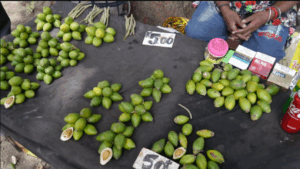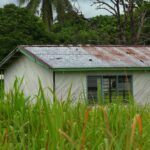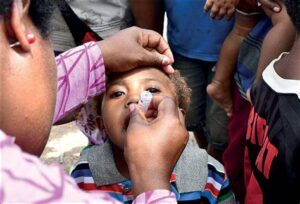Why are most health aid posts in PNG non-operational? How can this be improved? | Barbara Angoro

The recent blog post by Scott Waide on Josephstaal and church health worker Patrick’s struggles to transport medicines got me thinking a lot about access to medicines to aid posts, the primary level health facility throughout rural Papua New Guinea (PNG). As a kid, during holidays at home, you knew you’d get help at the aidpost if you fell ill with malaria or got scratches on your legs that became infected. By the time I reached university, the same story on both sides of my family homes – aidpost closed for some reason or another. Fast forward to 20 years on, aidposts in my villages are permanently closed. The PNG 2019 Health Sector Performance Annual Review, (SPAR) Indicator 22 which is ‘proportion of Aid Posts that are open‘ shows that except for 1 province, the rest did not meet the national target of 85% open. If you take time to see the previous years SPAR reports, this is the trend. The SPAR Report 2019 outlines the following as reasons for Aid Post closures: weakness in systems that includes support and recruitment of personnel, having a supportive management, and stability in the community.
“Aid posts provide the primary level of health care for most
of the population. A functioning aid post brings accessibility of the
health care services to local villages, and hence provides an
opportunity to improve health and well-being. Aid posts have been
described as the backbone of the health system in PNG. Over the
past decade, there has been a decline in the operation of aid posts,
compromising access to health care for many”.NATIONAL HEALTH PLAN 2011-2020
2019 SECTOR PERFORMANCE ANNUAL REVIEW, Indicator 22: Proportion of Aid Posts that are open
How can we break the vicious cycle? The obvious answer is by addressing the factors mentioned above. So how come year in, year out the report is telling us nothing has changed? Like the saying goes, if we do the same things all the time, we should not expect new results.
I totally understand that there are multifaceted issues at hand, but as a pharmacist, here’s one area I envisage could be addressed to improve the Indicator 22: training of pharmacy assistants to manage the Aid Posts and Health Centers medical supplies. University of PNG Pharmacy School had a pilot program training pharmacy assistants which were sponsored by their Provincial Health Authorities. I do not know what the latest status is, but I’m sure funding would make a whole world of difference.
In the meantime, can our respective government representatives in the provinces identify what the issues are regarding the closure of Aid Posts? Is it because the Aid Post Orderly is retired? Is it because the building is not fit to be used? Is it because no medical supplies order has been put to the provincial medical stores? If this is so, why? Is there anything the community can do to help?
I had the privilege of working as a provincial pharmacist for two years in one of the provinces in PNG, and the routine rural health visits proved an eye opener for me. The main thing I found was that the personnel appointed to look after medical supplies were given a mammoth task without giving them the tools to carry out the job. Short trainings in basic inventory keeping, ordering the right medicines based on the usage and time taken to receive next order, and proper ways to store medicines went a long way. Most importantly, the networks created and being able to work together to ensure continuous medical supplies was a very fulfilling experience.
I hope the powers-to-be read this humble blogpost, and perhaps approach this important issue with the urgency it needs. We cannot afford to keep being content with reporting majority of provinces performing under par!
*Barbara Angoro, is a Papua New Guinean pharmacist and a PhD student at the University of Auckland. Some of her other work can be found on her personal blog: https://duresisodyssey.wordpress.com/






